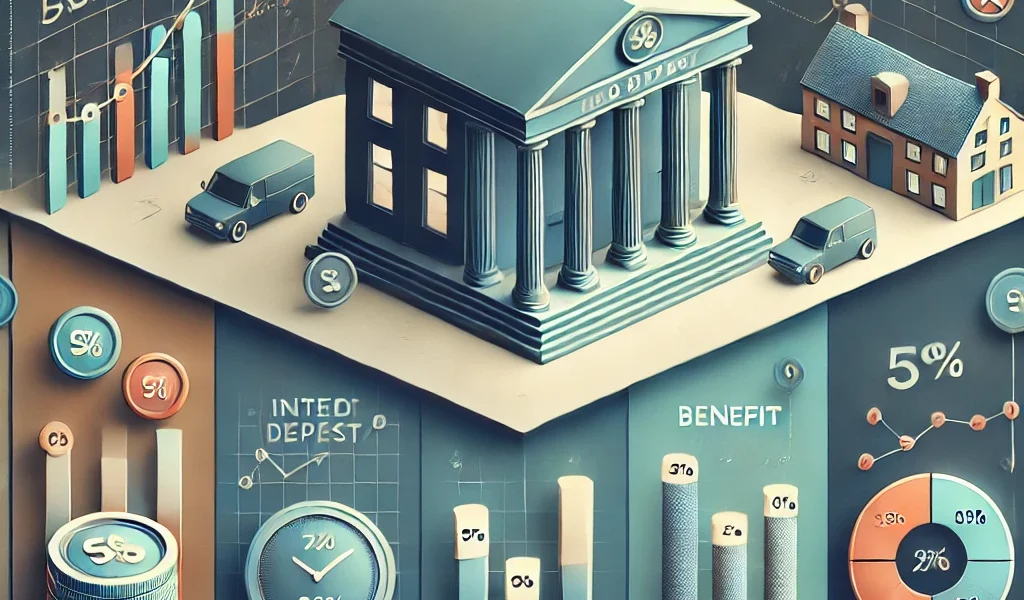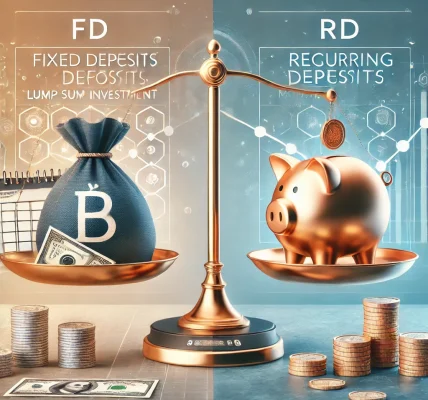Introduction
Fixed Deposits (FDs) remain one of the most popular investment options due to their security, guaranteed returns, and flexibility. Whether you are looking for short-term savings or long-term wealth accumulation, FDs provide a stable investment avenue with predictable earnings.
However, with numerous banks and financial institutions offering different FD schemes, selecting the best one can be challenging. This guide will compare the top fixed deposit schemes, their interest rates, benefits, tenure options, and special features, helping you make an informed decision.
What is a Fixed Deposit?
A Fixed Deposit (FD) is a financial instrument provided by banks and NBFCs where an investor deposits a lump sum amount for a fixed tenure at a predetermined interest rate. At the end of the tenure, the investor receives the principal amount along with accrued interest.
Key Features of Fixed Deposits:
- Guaranteed Returns: Fixed interest rate ensures predictable earnings.
- Flexible Tenures: Ranging from 7 days to 10 years.
- Higher Interest Rates: Compared to regular savings accounts.
- Loan Against FD: Borrow up to 90% of the FD amount.
- Tax Benefits: Certain FDs offer tax exemptions under Section 80C.
Comparison of Top Fixed Deposit Schemes (2025)
1. Bank Fixed Deposits
| Bank | Interest Rate (General) | Interest Rate (Senior Citizens) | Minimum Deposit | Maximum Tenure |
|---|---|---|---|---|
| SBI | 6.50% | 7.00% | INR 1,000 | 10 years |
| HDFC Bank | 7.10% | 7.60% | INR 5,000 | 10 years |
| ICICI Bank | 7.00% | 7.50% | INR 10,000 | 10 years |
| Axis Bank | 6.90% | 7.40% | INR 5,000 | 10 years |
| PNB | 7.00% | 7.50% | INR 1,000 | 10 years |
Pros: ✔ Safe and secure with RBI regulation. ✔ Competitive interest rates. ✔ Flexible tenure options. ✔ Suitable for risk-averse investors.
Cons: ✖ Premature withdrawal penalties. ✖ Lower returns compared to market-linked investments.
2. Corporate Fixed Deposits
Corporate FDs are term deposits offered by Non-Banking Financial Companies (NBFCs) and corporations. They usually provide higher interest rates than bank FDs but come with additional risks.
| Institution | Interest Rate (General) | Interest Rate (Senior Citizens) | Credit Rating |
| Bajaj Finserv | 8.05% | 8.55% | CRISIL AAA |
| Mahindra Finance | 7.80% | 8.30% | CARE AAA |
| Shriram Transport Finance | 8.50% | 9.00% | ICRA AA+ |
| HDFC Ltd | 7.50% | 8.00% | CRISIL AAA |
Pros: ✔ Higher interest rates than bank FDs. ✔ Flexible tenure options. ✔ Ideal for investors seeking better returns.
Cons: ✖ Higher risk compared to bank FDs. ✖ Not covered under DICGC insurance.
3. Tax-Saving Fixed Deposits
These are special FDs with a lock-in period of 5 years, allowing tax deductions under Section 80C of the Income Tax Act (up to INR 1.5 lakh).
| Bank | Interest Rate (General) | Interest Rate (Senior Citizens) | Lock-in Period |
| SBI | 6.50% | 7.00% | 5 years |
| HDFC Bank | 7.10% | 7.60% | 5 years |
| ICICI Bank | 7.00% | 7.50% | 5 years |
| Axis Bank | 6.90% | 7.40% | 5 years |
Pros: ✔ Tax benefit under Section 80C. ✔ Safe and stable investment.
Cons: ✖ Lock-in period of 5 years. ✖ Premature withdrawal not allowed.
4. Senior Citizen Fixed Deposits
Designed exclusively for senior citizens, these FDs offer higher interest rates and flexible payout options.
| Bank | Interest Rate for Senior Citizens |
| SBI | 7.50% |
| HDFC Bank | 7.60% |
| ICICI Bank | 7.50% |
| Axis Bank | 7.40% |
| Bajaj Finserv | 8.55% |
Pros: ✔ Higher interest rates. ✔ Monthly, quarterly, or annual interest payout. ✔ Ideal for retirees looking for steady income.
Cons: ✖ Premature withdrawal penalties. ✖ Limited to senior citizens (60+ years).
Factors to Consider When Choosing an FD
1. Interest Rate & Returns
Compare the rates across banks and NBFCs to get the best return on investment.
2. Tenure & Liquidity
Choose a tenure that aligns with your financial goals. If liquidity is a concern, opt for short-term FDs.
3. Premature Withdrawal & Penalties
Understand the penalties for early withdrawals, as they can impact overall returns.
4. Safety & Credit Rating
Bank FDs are insured up to ₹5 lakh by DICGC, while corporate FDs depend on their credit ratings (AAA-rated are the safest).
5. Tax Implications
- Regular FDs: Interest is taxable.
- Tax-Saver FDs: Provide deductions under Section 80C but have a 5-year lock-in.
How to Open a Fixed Deposit Account?
- Visit the bank or financial institution’s website or branch.
- Fill out the FD application form.
- Submit required documents (ID proof, address proof, PAN card, etc.).
- Select the tenure and amount.
- Choose interest payout options (monthly, quarterly, annually, or at maturity).
- Make the deposit and receive your FD certificate.
Conclusion
Fixed Deposits remain one of the safest and most reliable investment options for individuals seeking stable returns. Whether you prioritize high interest rates, tax-saving benefits, or flexible tenure options, selecting the right FD scheme is crucial.
By comparing the interest rates, tenure options, and benefits of different FD schemes, you can make an informed decision and maximize your earnings. Always consider your financial goals and risk tolerance before investing.
🚀 Ready to invest in a Fixed Deposit? Start comparing top FD schemes and secure your financial future today!




